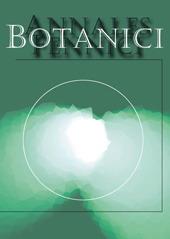Convergence in the endangered European bee-orchid species Ophrys kotschyi was studied using a molecular phylogenetic approach. We sequenced the nuclear ribosomal internal transcribed spacer (nrITS) and the Rrn5—TrnR intron of the chloroplast DNA (cpIGS) to resolve conflicting interpretations of its relationships. Some authors include all morphologically similar Greek taxa in the study species, others believe that similarity results from convergent evolution driven by a shared pollinator. Parsimony-based network building and three approaches of phylogenetic tree reconstruction provided a basic insight into the phylogeny of the studied taxa, revealing that the inclusion of the various Greek taxa in O. kotschyi results in a polyphyletic species. This implies the consideration of the species as a narrow endemic to Cyprus, and corroborates the view that convergent evolution is responsible for apparent morphological similarity. Additionally, nrITS sequencing revealed additive polymorphic sites in the nrITS, which implies significant inter-specific gene flow.
How to translate text using browser tools
1 April 2011
Convergent Evolution in Ophrys kotschyi (Orchidaceae) Revisited: A Study using nrITS and cpIGS Sequences
Gábor Sramkó,
Gergely Gulyás,
V. Attila Molnár
ACCESS THE FULL ARTICLE

Annales Botanici Fennici
Vol. 48 • No. 2
April 2011
Vol. 48 • No. 2
April 2011




